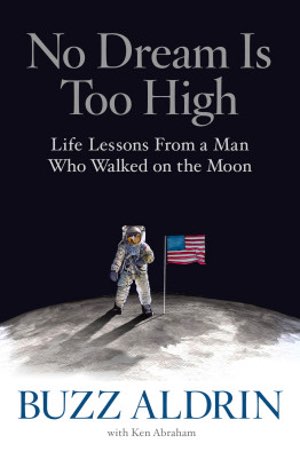Review: No Dream Is Too Highby Jeff Foust
|
| While the advice is relatively basic, many may find the anecdotes he tells from his life both entertaining and revealing. |
Aldrin, though, is more complicated than just an attention-seeking celebrity. Aldrin served his country and risked his life in that pursuit, first as a fighter pilot in the Korean War and then as a NASA astronaut. Then, after making history with Apollo 11, he struggled to figure out what to do next while barely 40 years old. In recent years, a vision of human missions to Mars has motivated him at an age—he turned 86 earlier this year—when most desire a quiet retirement.
In No Dream Is Too High, Aldrin tries to distill his experience, both good and bad, into a set of life lessons for others to follow. While the advice is relatively basic, many may find the anecdotes he tells from his life both entertaining and revealing.
The book’s 13 chapters are each focused on a specific lesson or piece of advice Aldrin gleaned from his life. That advice, though, is not particularly novel, nor is it particularly deep. “Keep your mind open to possibilities,” “practice respect for all people,” and “laugh… a lot!” are some of those pieces of advice, which almost everyone has heard in one form or another in the past. From a practical advice standpoint, most readers will come away primarily with reinforcement of previous advice, rather than new guidance.
Readers, particularly space enthusiasts, may still find the book an entertaining read, as Aldrin offers vignettes from his life to support his life lessons. The book is not a biography—he’s written memoirs before, including 2009’s Magnificent Desolation (see “Reviews: Remembering Apollo in ways old and new”, The Space Review, July 20, 2009)—but he does offer recollections of events throughout his life, many from his time as an astronaut and thereafter.
Some of those stories are familiar: he writes about the challenges of landing on the moon (from a chapter on how to trust your instruments, but also your gut), and how he and Neil Armstrong had to improvise when a circuit breaker in the lunar module broke before lifting off again. Others, though, are less familiar. He describes how he attended an early briefing about the shuttle program shortly after Apollo 11, and had grave concerns that the vehicle would carry people. He said he “spoke candidly” about those issues with NASA officials, but regrets he didn’t speak out more forcefully, thinking that his criticisms could somehow persuade NASA and industry that mixing crew and cargo was unwise.
Aldrin also describes lobbying to get on Air Force One with President Obama in 2010 for the trip to the Kennedy Space Center, where Obama discussed his vision for NASA’s future. “I wanted to fly on Air Force One so I could have a chance to talk with the president about my Mars Cycler,” he explained. After considerable effort, he did get on the plane, and did briefly talk to the president, using a model of the moon Phobos to illustrate his ideas. Aldrin said the president took the model, thinking it was a gift. “No, no, no! That’s my Phobos!” Aldrin said.
| He did briefly talk to the president, using a model of the moon Phobos to illustrate his ideas. Aldrin said the president took the model, thinking it was a gift. “No, no, no! That’s my Phobos!” Aldrin said. |
Some of those passages, though, seem to support some the perceptions of Aldrin as eccentric and egotistical. He blames himself for not speaking more forcefully about the perceived failings of the shuttle, but it’s not clear that, even immediately after Apollo 11, his criticisms would have been influential enough to alter the program. And for all his effort to get on Air Force One to lobby the president, his Mars Cycler concept is not currently part of NASA’s Mars exploration plans.
If you’re looking for life advice, No Dream Is Too High will largely be a reaffirmation of past advice, told in a different way by a different person with different experiences. Perhaps his best advice, though, is not contained in any chapter but is instead reserved for the book’s final page. “Take it from a man who has walked on the Moon: Be careful what you dream—it just might come to pass, so be prepared.”
